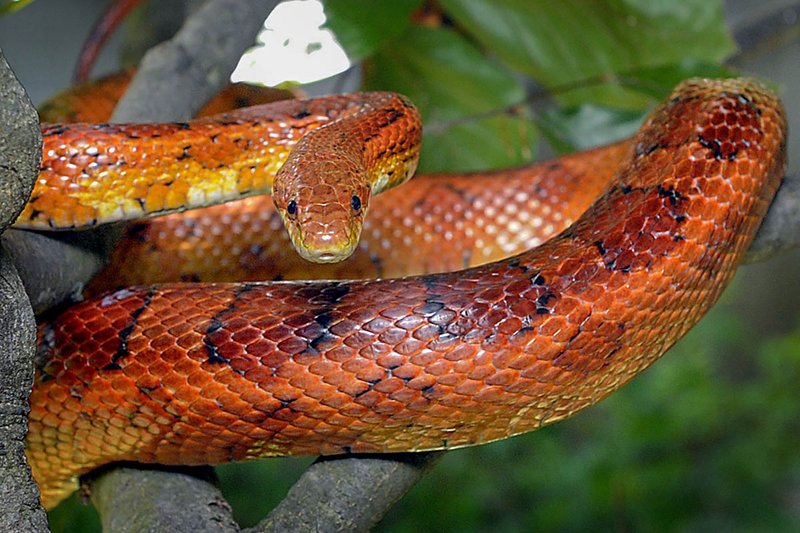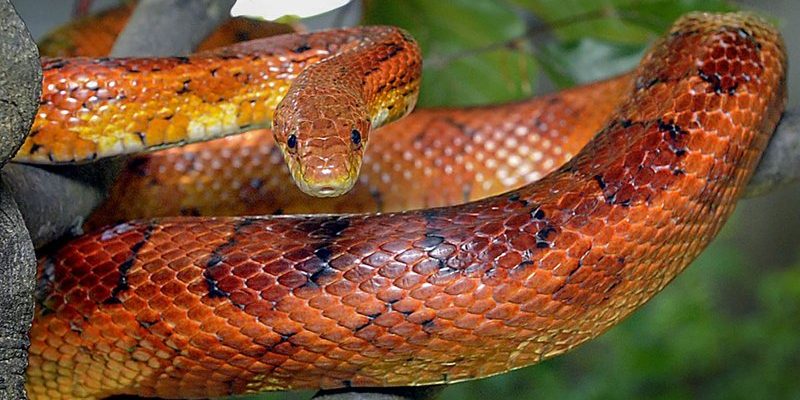
Imagine a lush forest where corn snakes glide smoothly, hidden among the leaves and underbrush. Unfortunately, these habitats are increasingly threatened by human activity. As we continue to develop land for agriculture and urban living, the corn snake’s home shrinks, making it harder for them to survive. So, are they at risk? Let’s break it down and see what’s being done to protect these fascinating reptiles.
What Exactly Is a Corn Snake?
Corn snakes are a non-venomous species native to the southeastern United States. Recognized for their beautiful, intricate patterns, they can range from orange and yellow to a striking reddish-brown. They earned their name from the resemblance of their skin patterns to the kernels of corn.
These snakes are known for being docile, which makes them popular pets. In the wild, they primarily feast on rodents, birds, and other small animals. They play a crucial role in the ecosystem by controlling pest populations. However, their habitat is becoming increasingly compromised, raising the question of whether corn snakes are endangered.
Are Corn Snakes Endangered?
Here’s the thing: corn snakes are generally not considered endangered. According to the IUCN (International Union for Conservation of Nature), they fall under the “Least Concern” category. This means they are not currently facing an immediate threat of extinction. However, while their overall population is stable, specific local populations can face significant challenges.
Urbanization, habitat destruction, and illegal pet trade can jeopardize local corn snake populations. So, while the species as a whole isn’t endangered, the individual snakes in certain areas might be at risk. It’s a bit like a neighborhood that seems fine, but some houses are falling apart. Understanding and monitoring these trends is crucial for their long-term survival.
Threats to Corn Snake Populations
While corn snakes aren’t labeled as endangered, they face several threats that can impact their survival. Let’s explore these challenges.
- Habitat Loss: As cities expand and agriculture spreads, corn snakes lose their natural habitats. Deforestation and land development can diminish the areas where they thrive.
- Climate Change: Fluctuating weather patterns can alter the ecosystems that corn snakes depend on, affecting their food sources and breeding habitats.
- Illegal Pet Trade: Even though corn snakes are popular pets, the illegal capture and sale of wild corn snakes can reduce local populations.
- Road Mortality: Many snakes get killed by vehicles while crossing roads—a real danger in areas where their habitats intersect with human development.
Understanding these threats is the first step toward helping corn snakes. Each challenge needs specific strategies to address and manage it effectively.
Conservation Efforts for Corn Snakes
Fortunately, various organizations and communities are stepping up to protect corn snakes and their habitats. Let’s look at some of the notable conservation efforts.
- Habitat Restoration: Groups like the Nature Conservancy work tirelessly to restore and protect natural habitats. This helps create safe spaces for corn snakes to live and thrive.
- Education and Outreach: Many conservation organizations provide resources to educate the public about the importance of corn snakes and their role in the ecosystem.
- Wildlife Corridors: Building wildlife corridors can help mitigate road mortality by providing safe passage for snakes and other wildlife across busy roads.
- Legal Protection: Laws and regulations can help protect corn snakes from over-collection and habitat destruction.
By supporting these efforts, we can help ensure corn snakes continue to thrive in their natural environments.
How You Can Help
You might be wondering how you can contribute to corn snake conservation efforts. Here are a few practical ways to make a difference:
- Support Related Organizations: Consider donating to or volunteering with local wildlife organizations dedicated to conservation.
- Educate Others: Share information about corn snakes and their importance in the ecosystem with friends and family. Education is key to creating awareness.
- Choose Ethical Pet Options: If you’re interested in getting a corn snake, opt for a captive-bred snake rather than one caught in the wild. This reduces pressure on local populations.
- Advocate for Environmental Protection: Support policies and initiatives that aim to protect natural habitats from destruction.
Even small actions can lead to significant changes when everyone pitches in.
The Future of Corn Snakes
While corn snakes are currently not endangered, their future relies on our collective efforts to address the threats they face. Protecting their habitats and educating ourselves and others about their importance is essential for their survival.
Imagine a future where corn snakes roam freely in their natural habitats, thriving in the wild. It’s a possibility that we can work towards if we take action now. Every effort counts, and together, we can make a real impact.
In summary, corn snakes are fascinating, non-venomous reptiles that play an important role in their ecosystems. While they are not currently endangered, various threats can impact local populations. Conservation efforts are crucial in maintaining their habitats and ensuring their survival.
As individuals, we can all contribute to these efforts, whether through education, support for wildlife organizations, or making informed choices about pet ownership. With a little effort, we can all help the corn snake continue to thrive, blending beautifully into the landscape just as nature intended. So, let’s keep the conversation going and do our part to protect these wonderful creatures!

